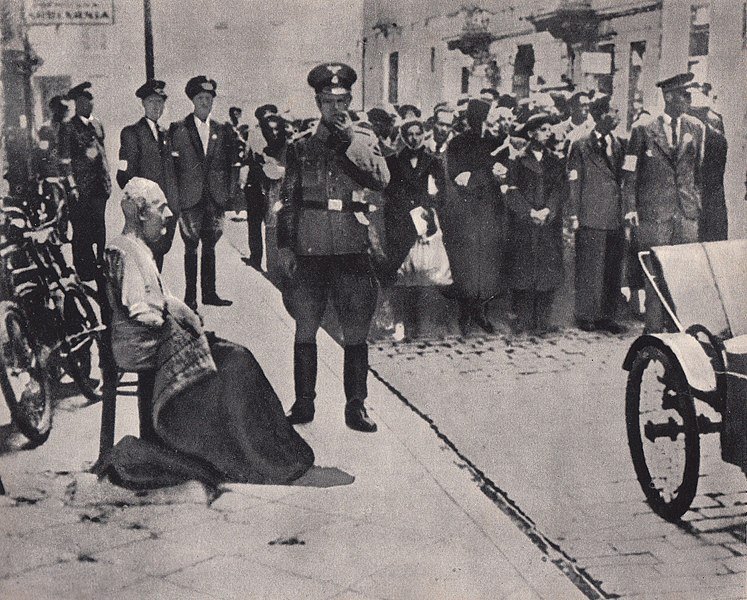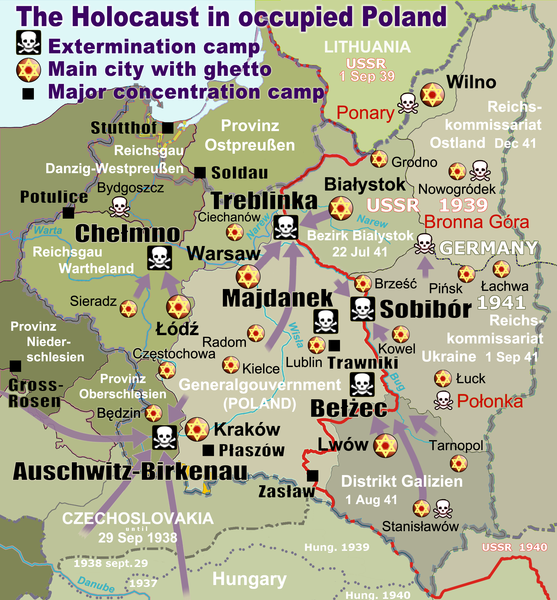Deportations
1942-1943
Umschlagplatz holding pen for deportations to Treblinka death camp (c. 1943) Source: WIkiCommons
Beginning in July 1942, German SS and police began the mass deportation of Jews from the Warsaw Ghetto to Treblinka. This operation was called the Grossaktion Warschau or “Great Action” by the Nazis and was initiated on the order of SS Chief Heinrich Himmler. The deportations continued until September 12, 1942 by which time around 265,000 Jews had been sent to the killing center and another 35,000 had been murdered in the ghetto during the process. By October 1942, only 35,639 people remained in the ghetto according to a Nazi population census, but another 30,000 Jews were living in the ghetto undetected by the German police or SS officers.
The Nazi administration demanded the Judenrat (Jewish Council) support the deportation and assist the SS and German police in the operation. The German operatives would surround a block of the ghetto and force the residents onto the streets and then march them to the trains for deportation. They would beat those that were too slow and shot any person that did not comply with their orders.
The Grossaktion Warschau “Great Action” (c. 1942). Source: WikiCommons
The growing concern about the deportations and rumors of the extermination camps in the east infiltrated the ghetto and set the remaining population on edge.
Historian Emanuel Ringelblum, who was incarcerated in the ghetto stated, “it seems to me that people will no longer go to the slaughter like lambs. They want the enemy to pay dearly for their lives . . . they’ll not allow themselves to be seized in the street, for they know that work camp means death these days.” (The Journal of Emanuel Ringelblum, Notes from the Warsaw Ghetto, 1958).
Deportation of ghetto inmates at the Umschlagplatz (c. 1942-1943). Source: Jewish Historical Institute in Warsaw
Map of the Holocaust in Occupied Poland. Source: WikiCommons
Preparations began for a rising resistance in the Warsaw Ghetto when the deportations halted in September 1942. Resistance groups, such as the Jewish Combat Organization (ZOB) and Jewish Military Union, led the organization of the movement. When deportations began again on January 18, 1943, the remaining inhabitants of the ghetto defied Nazi orders and put up armed resistance against the Nazis, which injured several soldiers and led to a temporary stop to the deportations. Still, Jewish resistors built bunkers and gathered weapons for an armed conflict against the Nazis.




